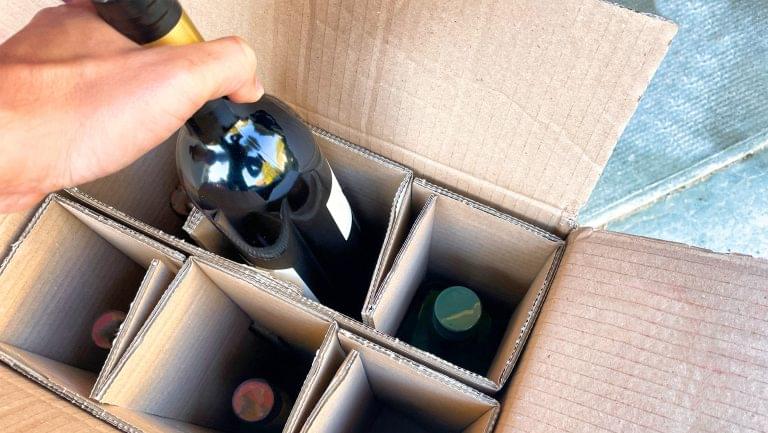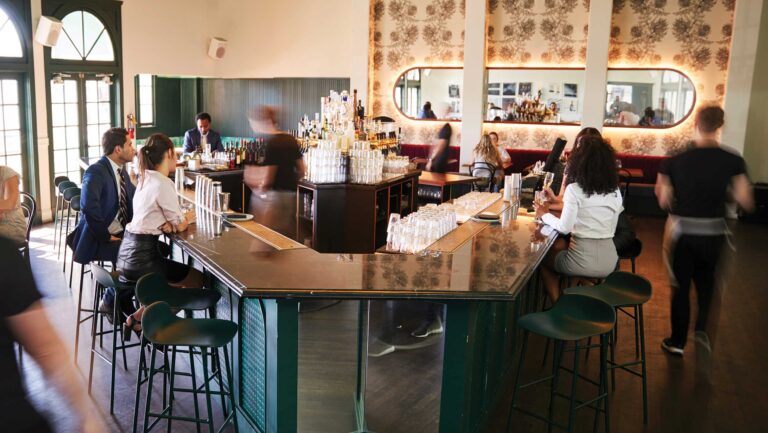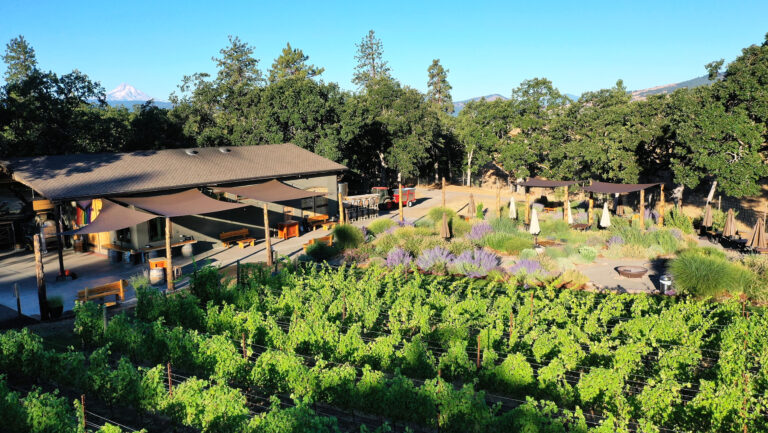While developing a strong distribution network was once essential to a domestic winery’s survival, over the past two decades, direct-to-consumer (DTC) sales have become increasingly important for U.S. producers. The growth of wine tourism and the 2005 Granholm v. Heald Supreme Court decision slowly opened wineries’ ability to direct ship to consumers, but it was the impact of COVID-19 restrictions that forced DTC sales to the forefront, providing a lifeline to many producers whose normal operations changed overnight.
According to a Silicon Valley Bank survey last year, during the height of the pandemic, 44 percent of wineries held weekly online tastings for consumers, while only 22 percent did not go digital at all. That coincided with more states and cities allowing direct shipment of wines from the producer to the consumer.
“There are now only three states that don’t permit any winery shipments to customers regardless of conditions—Delaware, Utah, and Mississippi,” says Alex Koral, the regulatory general counsel for Sovos ShipCompliant, a supplier of compliance software for wineries. “Alabama was a major target, and they passed approval to ship in August 2022.”

Don’t miss the latest drinks industry news and insights. Sign up for our award-winning newsletters and get insider intel, resources, and trends delivered to your inbox every week.
As lockdowns were lifted and wine tourism again became common, three questions emerged: Would the share of DTC within total winery sales remain consistent post-COVID? How would wineries integrate their various elements of DTC—tasting room, wine clubs, and online sales? And what new tools and services would they use to adapt?
Wineries Maintain Online Sales Gains
The answer to the first question looks encouraging. A recent ShipCompliant report, produced in collaboration with Wines Vines Analytics, shows the value of the winery DTC sales channel broke the $4 billion mark in 2021, coming in at $4.2 billion, driven by an 11.8 percent increase in average price per bottle on 8.5 million cases shipped from American wineries. But a much smaller number in the report is perhaps more important—after the huge increase in online sales in 2020 during the heart of lockdowns, the volume of online sales still increased by 1.4 percent in 2021.
For example, after a 600 percent increase in online sales in 2020, Aileen Sevier, the VP of strategy and marketing for Virginia’s Early Mountain Vineyards, says, “We projected a significant decline in 2021, but online sales continue to hold strong, and we now have a team member dedicated to this channel.” Sevier is indicative of today’s winery DTC heads who come with business backgrounds and who thus add marketing and analytic skills to DTC planning.

“Large numbers of consumers will incrementally grow in their desire to shop online due to behaviors learned during COVID,” Rob McMillan, the head of Silicon Valley Bank’s wine division, predicted earlier this year in SVB’s State of the U.S. Wine Industry report. “That is especially true of Boomers, who were the cohort with the highest growth in internet transactions during 2020.”
Just as winemakers like to say their wine is made in the vineyard, most wineries say the genesis of online sales starts in the tasting room, with the emphasis being on enticing people to the tasting room for a great experience and maintaining a special relationship. “Visitors to the winery want a more rounded view of us than just tasting a glass of Chardonnay,” says Channing Jones, the head of DTC sales and marketing at Alma Rosa Winery in Solvang, California. She uses ads on social media to help get them there. “When customers leave, we follow up online to thank them for the visit, and ask them if they want to receive our newsletters. We don’t want them to forget about us.”
“We are currently 60 percent DTC, and we want to move that to 90 percent,” says Trey Busch, a cofounder of Sleight of Hand Cellars in Walla Walla, Washington. To achieve this, Busch, like an increasing number of winery heads, opened a second tasting room in a major city (Seattle), holds audience-participation events at both venues, and has four different tasting clubs. “You have to start with great wine, or you’ll get nowhere,” says Busch, “but your tasting room has to be a fun place.”
In Search of 100-Percent DTC
When Kathleen Inman started Inman Family Wines in Santa Rosa, California in 1999, she wanted it to be completely DTC to avoid the costly wholesaler channel. “For the last four years we’ve achieved 100-percent DTC with the exception of a few small accounts,” she says. While her tasting room visits are still down, she maintains a very active virtual program and, like a few wineries, has robust DTC programs with corporations, who see in-person and virtual employee wine-tasting events as great morale boosters.
From a consumer standpoint, Jeff Fetterman, a Delaware resident who has his wines shipped to a nearby state, says he and several friends have visited many tasting rooms both in California and on the East Coast; he maintains a relationship with many of them. “I am doing more direct orders from wineries than I did five years ago,” he says. “They also communicate more than before—emails, phone calls, offers for Zoom events.”

Zoom, in fact, is the primary technology change that jump-started online wine events and sales during the pandemic. Other event platforms have rushed to catch up. “I think I was one of the first clients for Sommsation,” Busch says, referring to a virtual wine tasting platform he works with. “It’s built around knowledgeable wine people who host online events for consumers and businesses.”
Busch does not get involved in events directly; rather, consumers pick from Sommsation’s lineup of virtual events and if Sleight of Hand wines are featured in that event, Busch ships directly to participants, Sommsation retains the event fee, and a portion of that fee goes back to Sleight of Hand Cellars. “One of my first orders was to consumers in eight different states,” he says.
Increasingly sophisticated software packages help wineries track customers and integrate information gleaned during tasting room visits and online orders. As state laws vary and can detail which size wineries can or can’t ship, how taxes are collected, and whether free shipping is allowed, Koral explains that ShipCompliant’s software helps wineries know which forms are needed and which rules to follow. “Additionally,” he says, “wineries are now having to handle the ‘Amazon effect’—customers wanting next-day, free shipping.”
All in all, the attention paid to DTC during the pandemic is continuing to provide results. “We have grown over 60 percent since before the pandemic with DTC top-line revenue,” says Vida de Long, the VP for DTC sales at Far Niente Winery in Napa Valley. “It’s been exciting, as we have been able to shift channels and pivot, preserving and maintaining customer loyalty.”

Dispatch
Sign up for our award-winning newsletter
Don’t miss the latest drinks industry news and insights—delivered to your inbox every week.
Roger Morris is a Delaware-based writer who for the past 20 years has contributed articles on wine, food, and popular culture to about a dozen publications in the U.S. and Europe. Currently, he writes for World of Fine Wine, Drinks Business, Meininger’s, VinePair, Wine & Spirits, and Global Drinks Intel, among others. In prior years, he taught writing at Arizona State University and the University of Delaware and was an industry marketing executive.







